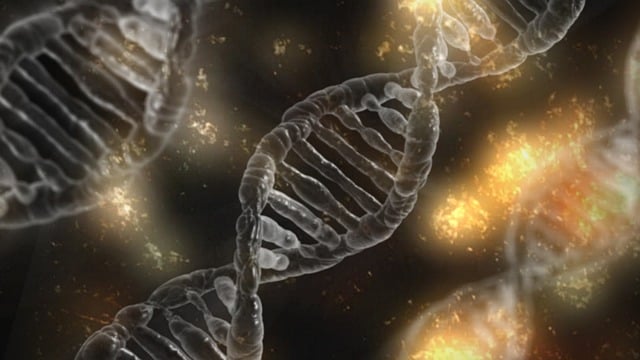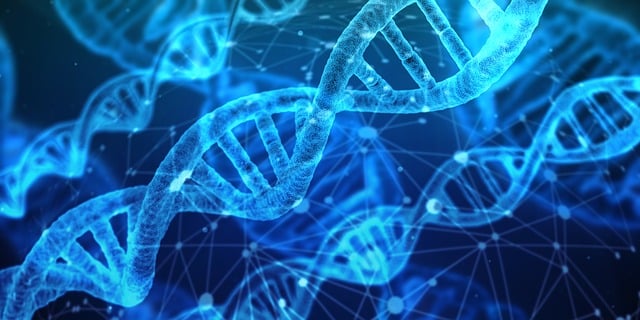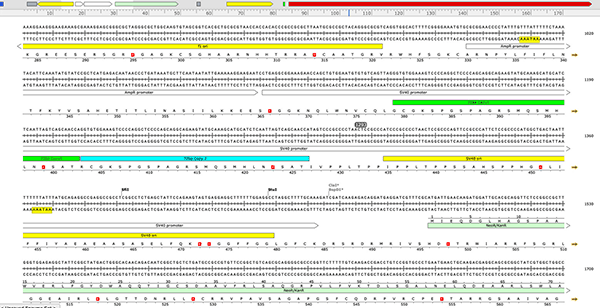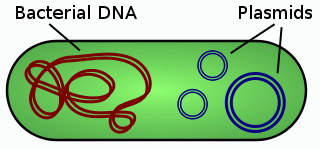
Image by Darwin Laganzon from Pixabay
Three labs confirm fragments of DNA from manufacturing are left in the mRNA vaccines
We injected 70% of the world’s population with a barely tested admixture that included random lengths of DNA. We don’t know for sure if that DNA has been inserted into our nuclear DNA, but we’re not really looking either. The government just says mRNA can’t change your DNA. But could contaminated mRNA which is packaged in lipid nanoparticles, with gene therapy vectors and enhancers do that? Maybe, but whatever you do, don’t run those tests, right?
Are we changing germline genetics of the human race — getting into sperm or egg cells? We don’t know. These are just the games we play these days. We could easily have run those tests on sperm at least, before we approved anything in young fertile adults and children, but we didn’t. A Chinese scientist that did that once in a different experiment ended up in jail. Some researchers are quite concerned to put it mildly. The odds may be low, but the numbers are astronomical. After a few billion hands of poker everyone has a Royal Flush.
In March, Kevin McKernan, a molecular biologist, found DNA contamination in Pfizer’s mRNA Covid vaccines and published this in here and here. As soon as Kevin McKernan put out his paper on the presence of small fragments of SV40, the Factcheckers arrived to flood the scene with strawmen — declaring there’s no SV40 virus in vaccines — which is true, but no one said there was.
Now the presence of remnant DNA has been confirmed by two independent labs (Dr. Sin Lee and Philip Buckhaults) — so it wasn’t a freak finding or a mistake. It really is that bad. Indeed, Phillip Buckhaults set out to show the fears were overblown but instead, in astonishment, confirmed what McKernan found.
“My plan was to examine the vaccine to debunk the fear of SV40 being in the vaccine. … I checked them first by a PCR assay that uses primers against the vector, and lo and behold, it fired very hot. A very, very high signal. … and son of the gun, Kevin McKernan was right, this plasmid is present in the vaccine. I proved that there is NOT SV40 full virus, but there is plasmid DNA. And that plasmid does have a little piece of SV40 in it. “
— Phillip Buckaults interview with Maryanne Demasi
A plasmid is a circle of DNA that’s a regular lab tool. In this case it contains about 10% of the SV40 virus, a virus that contaminated some polio vaccines around 1960, and has been the subject of many studies since. We find it in cancer cells, but did it cause the cancers? Academic opinion is divided (see the papers here). But the part of SV40 that’s in the plasmid is a potent part that amplifies or promotes whatever code follows it. Indeed, SV40 is used in gene therapy research — it makes a good vector. It’s such a good gene therapy tool that the residual DNA contaminant ought to be classified under gene therapy regulations instead of vaccination rules, says McKernan. He points out that there is an ongoing lawsuit in Australia with the TGA about this very issue.
The mRNA vaccines are an incredibly complex chemical product — easy to screw up
Creating mRNA vaccines was a monumentally ambitious chemical task. It’s no wonder things went wrong. An mRNA molecule is a chain of four different small molecules that is 4,284 bases long, in an exact sequence in the correct order. Effectively, on a molecular scale, we must connect these 4,284 nucleic acid bases in a row, and then wrap them in a fat layer (called a lipid nanoparticle). McKernan estimates each vaccination dose contains 13 to 40 trillion copies of the mRNA. This is not like the complexity of chemistry, say, used in creating ammonia in the Haber Bosch process, but something leagues, astronomical magnitudes beyond that. It is only possible because a billion years of evolution has crafted nano-scale machines that do a lot of it for us. We are merely co-opting the tools of biology. Grinding out thousands of bases is something even bacteria can do, but cleaning it up, that’s much harder.
To create all the copies of mRNA, and package it up, we use E.Coli — a bacterium — to be the molecular factory, then we have to strip out those factories, to disassemble them and all their “body parts” and remove them, without damaging the product, and in some batches we failed miserably.
Once again, we all hope friends, families and readers here, of course, got the good batches. It was a lottery.
The best interview covering this is with the Epoch Times: American Thought Leaders Interview
I recommend watching it at the link, or reading the whole transcript there. (I don’t think it is paywalled, but if you can’t play it, Brenda suggests this Rumble video version. These are excerpts below:
Kevin McKernan Talks COVID Vaccine DNA Contamination, the Monkey Virus SV40 Promoter, and What’s Actually in the Vaccines
… many years ago there was a case where Dr. He in China did some genome edits on two babies. He made two CRISPR [clustered regularly interspersed short palindromic repeats] babies. That guy went to jail. Fast-forward to today, we’re willing to take that risk on billions of people. Now granted, CRISPR is a lot more effective, and doing it on germline is obviously going to affect every cell in the kid’s body. We’re probably not going to get every cell in the kid’s body when we inject them with one of these vaccines.

Image by Gerd Altmann from Pixabay
Why did we need such high doses? “… an RNA molecule for every single cell in your body.”
The RNA is just supposed to make enough protein to teach some white blood cells, not to teach every single damn cell in your body:
But what I think was perhaps a valid critique of their effort is that they never really knew how much you needed. Their dosage study looked at three doses. Why are we injecting 40 trillion of these things into people?
Why does the immune system need such a huge payload to build an immune response? … we’re putting in truckloads of this material.
We’re doing it over and over and over again, and it’s not working. These are all signs that something is horribly wrong. There’s 30 trillion cells in your body, so there’s more than an RNA molecule for every single cell in your body.
Would you like factory DNA in your ovaries?
We know from the biodistribution study that some of these LNPs are getting to the ovaries, so that’s a huge concern. If 1 percent of these LNPs get to the ovaries, there’s 40 billion in each shot, we’re getting down to 400 million that go to the ovaries. Now you’re starting to really concern yourself. If there’s only 300,000 oocytes in each female, and there are 400 million LNPs down there, these numbers are worrisome. What are we doing to the germline in the future generation?
(These numbers didn’t quite tally. Some studies estimate each LNP ball has on average 5 mRNA’s. So 40 billion LNP’s won’t carry 40 Trillion mRNA’s, as McKernan stated above. Perhaps the transcription tool “misheard”, or a reader can explain — either way, the important point stands. Human eggs are precious things, a million or a billion accidents either way is awful).
We don’t know where the vaccines went in body tissues:
A cocktail of contaminants
The contaminants include not just a part of a monkey virus, but also antibiotic resistance, and also something called a 72 ACE pair enhancer which is apparently good for moving DNA into the nucleus (Oh no).
Fragments of DNA — especially ones packaged the right way — could integrate into our own genetic code. They may do nothing or everything depending on where they “land” in our 3.2 billion base genome. They may cause cancer if they land inside a key gene that usually protects us against cancer.
The concern is if this DNA integrates the genome, one portion of the SSV40 sequence is an SV40 promoter, a very strong promoter, which means it drives transcription wherever it lands in the genome. If this happens to drop itself in front of a proto-oncogene and drives a lot of expression off of a gene that’s known, if you hyper-express it and turn the cell cancerous, then we have a concern that DNA is in fact doing that.
Normally it’s difficult for loose bits of DNA to get near the nucleus of our cells where our DNA is kelp. But if the DNA is packaged up and has the right equipment, it can get there:
There are two concerns. There are promoters in this vaccine from SV40 and there’s an 72 ACE pair enhancer, which David Dean has shown is a very potent tool for moving DNA into the nucleus, and they’re right next to each other. If this DNA moves into the nucleus and it drags a promoter with it, and that integrates in front of a gene, it can disrupt gene regulation and potentially lead to the oncogenesis.
Pfizer hid the SV40 component from the EMA
This is a really bad look:
The really crushing thing here is Pfizer never disclosed the SV40 information to the EMA [European Medicines Agency]. They gave them a plasmid map of what the plasmid consisted of, with all of the features labeled, with the exception of the SV40 site.
They did that because they know the SV40 region is a very controversial base in its history in the vaccine field. The polio vaccines were contaminated with the full virus, not just these little components, but the full virus. The full virus has over 5,000 bases. The components we have are about 466 bases of the virus, but they’re arguably the most functional aspects of the virus’s genome for replicating and for gene expression.
The fact that they hid that this is in there from the EMA is a concern. We know from David Dean’s work that it’s used as a gene therapy tool, so it would clearly classify the residual DNA in the vaccines under the gene therapy regulations that we have in many jurisdictions.
Fragments of DNA that integrate may do nothing or everything depending on where they “land” in our 3.2 billion base genome. They may cause cancer if they land inside a key gene that usually protects us against cancer. All our cells have multiple layers of protection against cancer, but this may wipe one of them out.
Stop vaccines for children and adults of fertile ages until we know
If the DNA of eggs and sperm is being changed — it may mean the death of that particular embryo, which may delay pregnancy but not preclude it. It could translate into falling fertility rates, or it may mean children born with a higher risk of disease or disability. We may be playing “shotgun” genetics with the next generation. Why aren’t our Ministers of Health looking? It would be easy to analyze sperm samples and answer this question. It’s a lot harder to test eggs. It’s the sort of test that could be done in weeks.
Now that the DNA contamination is known, the question of culpability and informed consent gets so much more pointed. But for our regulatory agencies — the question remains — why didn’t test for this at the start of 2021?
What kills much faster than cancer? — “endotoxins”
McKernan admits that bacterial endotoxin contamination scares him more than the DNA — at least in an immediate sense. The remnant shells of the bacteria — the body parts of E.Coli — are called lipopolysaccaride, or LPS, and they are highly allergenic. We deal with small doses of this all the time, but in large doses, they can cause anaphylaxis — the potentially deadly overactivation of our immune systems. Just this contaminant alone may have caused sudden deaths within minutes of injection.
Cherry picking the tests to pass outdated regulations
Coding for the nerds
Lastly, this, below, is just a part of the code for the plasmid DNA contaminants in the mRNA vaccine. Click to enlarge. The A, C, T and G stand for molecules called adenine, cytosine, thymine and guanine. Think of this as the C++, or Python of biology. Given the current state of play, perhaps it’s worth becoming a bit more familiar with molecular biology.

SV40 promoter code. Emerald Robinson
It is double stranded — and in the alternate chain, which is effectively a back up “mirror” copy, we see C always pairs opposite G and T always sits opposite A. This is exactly the same as our DNA — same bases, same language. Our cellular machinery will potentially engage and read this code and produce the products — whatever they are.
—————————————————
hat tip: John Connor II, Leo G, Konrad, Ian B, bella.
Kevin McKernan’s blog is Anandamide
Kevin McKernan1*, Anthony M. Kyriakopoulos2 and Peter A. McCullough3 (2023) Differences in Vaccine and SARS-CoV-2 Replication Derived mRNA: Implications for Cell Biology and Future Disease, Submitted for peer review. [DocX] (page 11)
Bacteria image by Spaully
